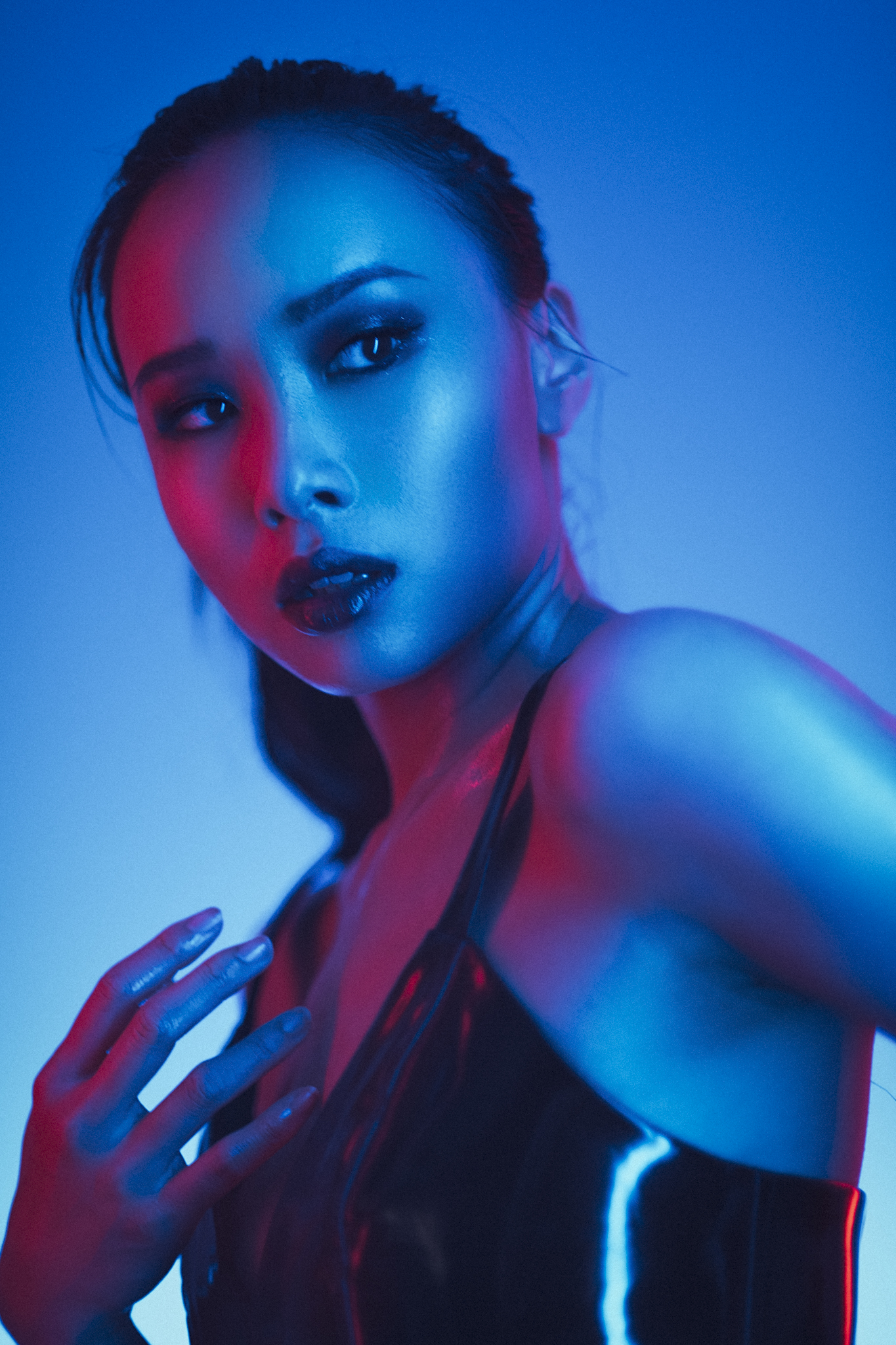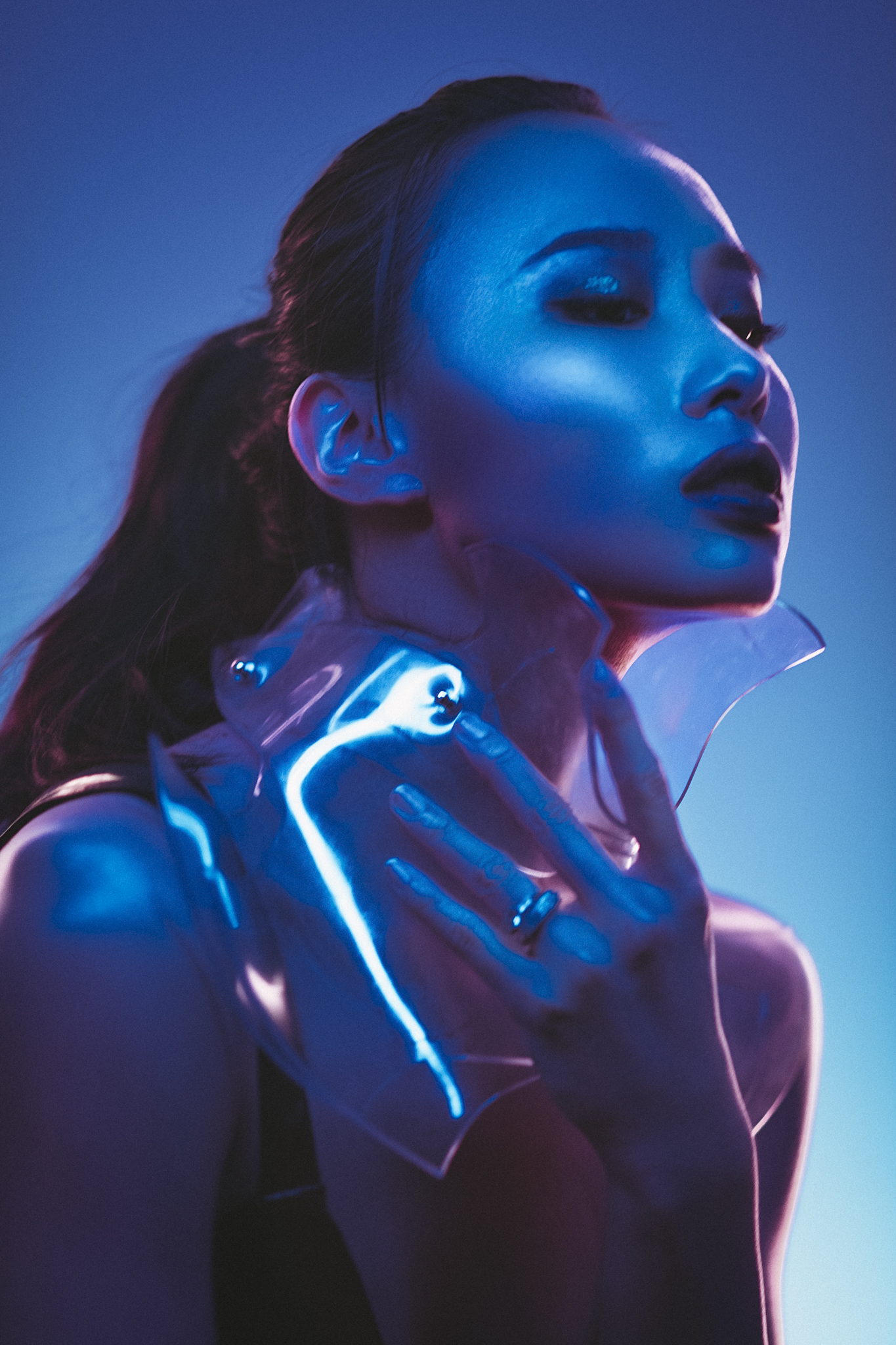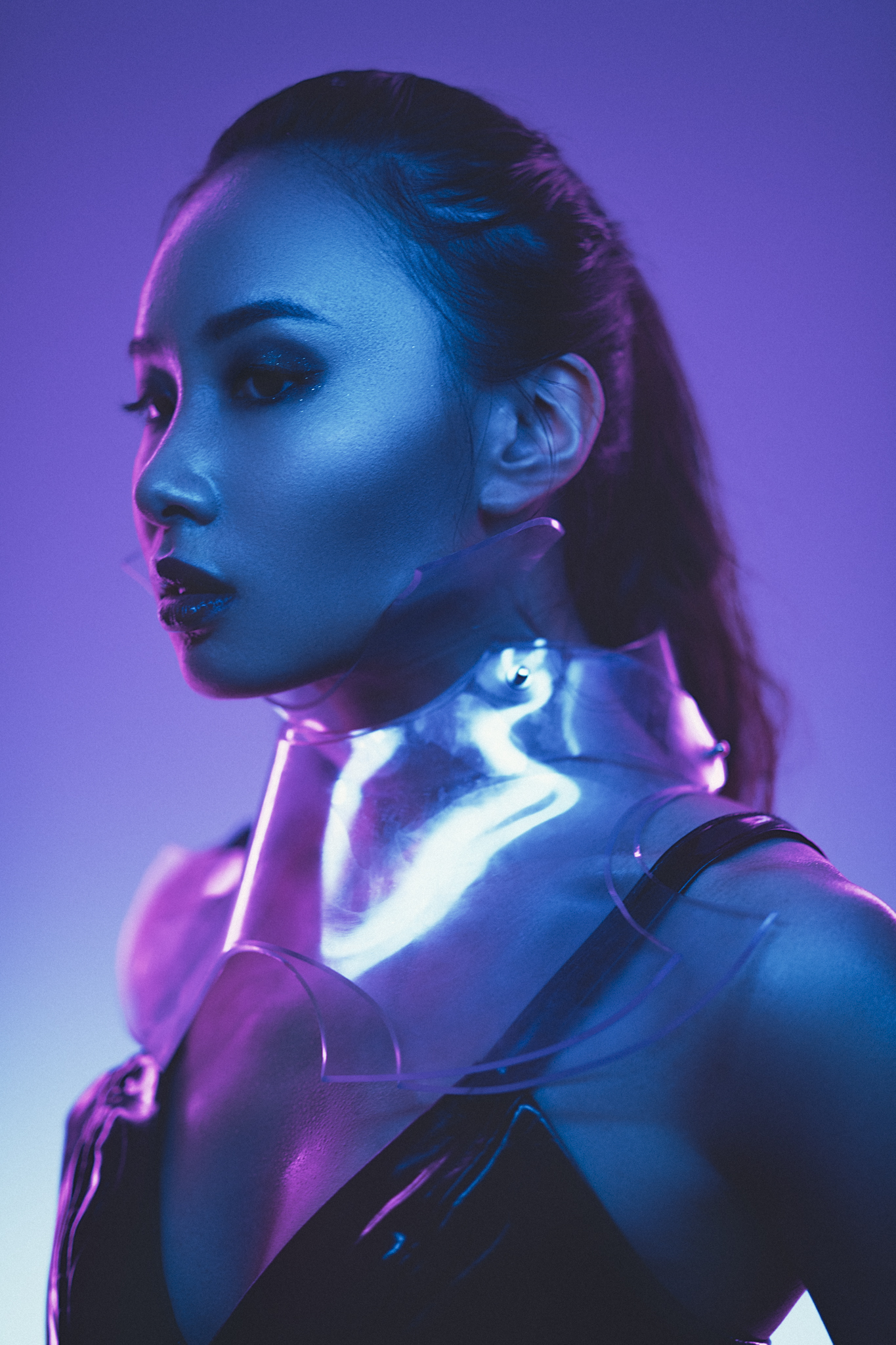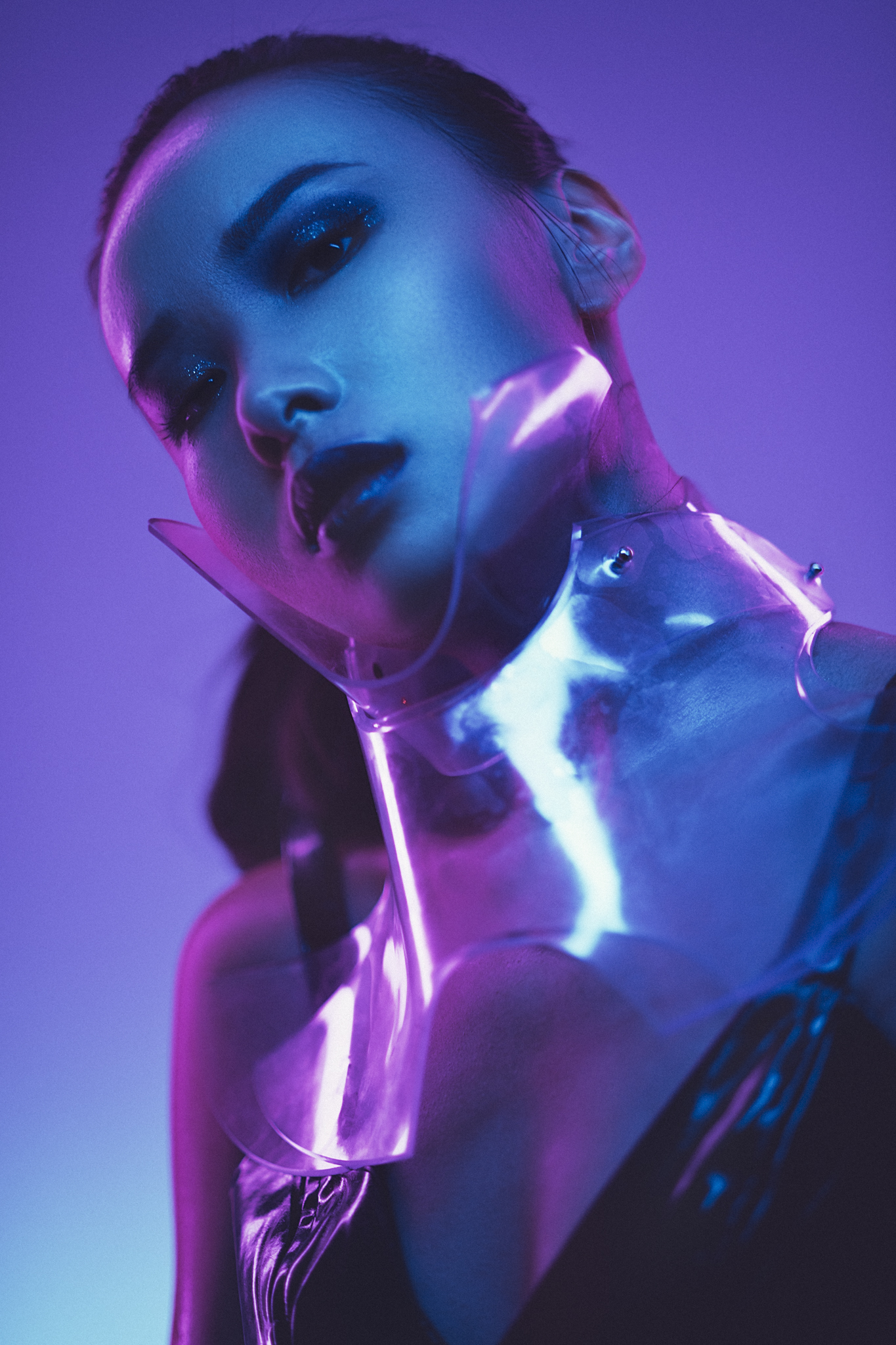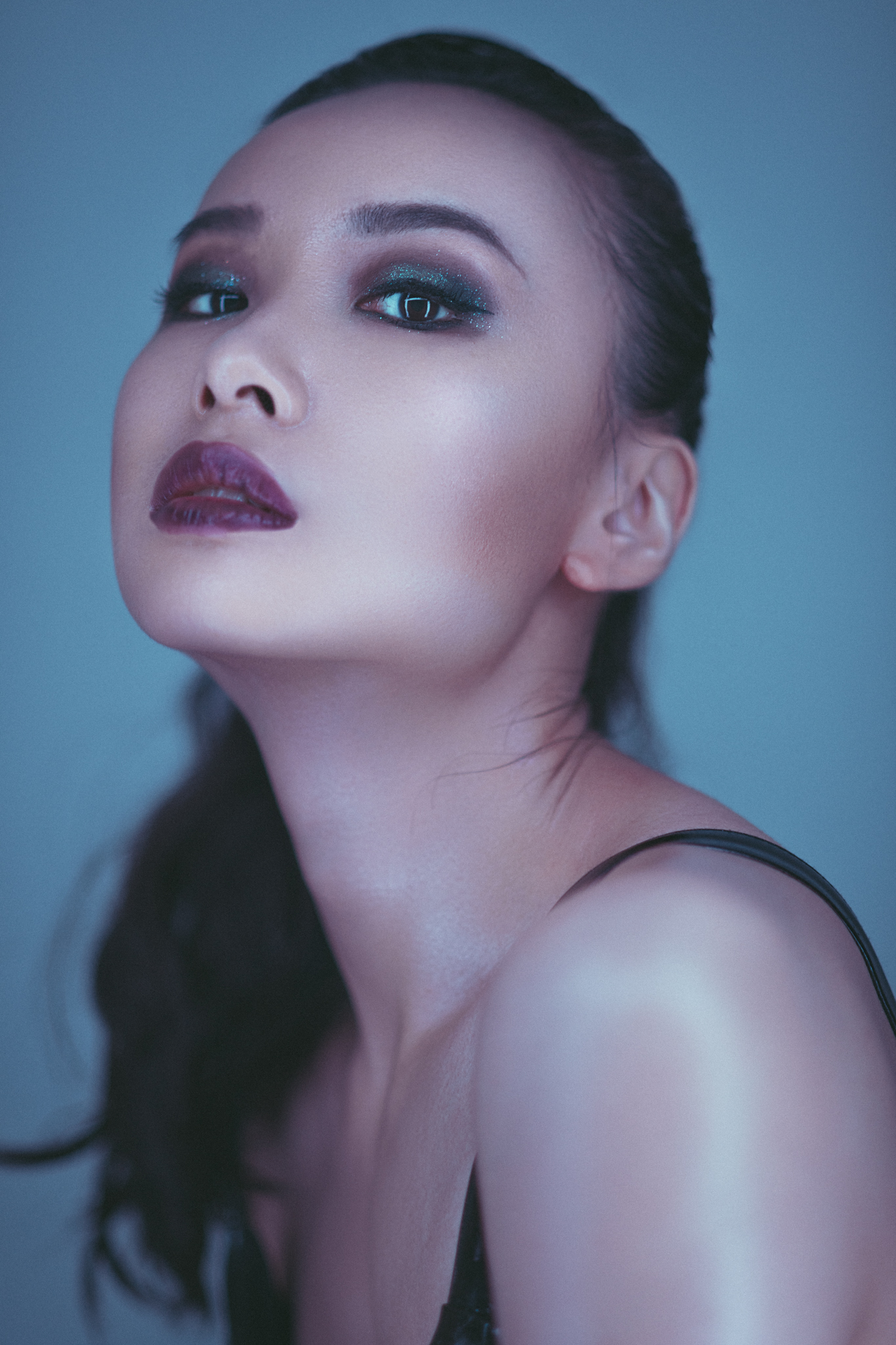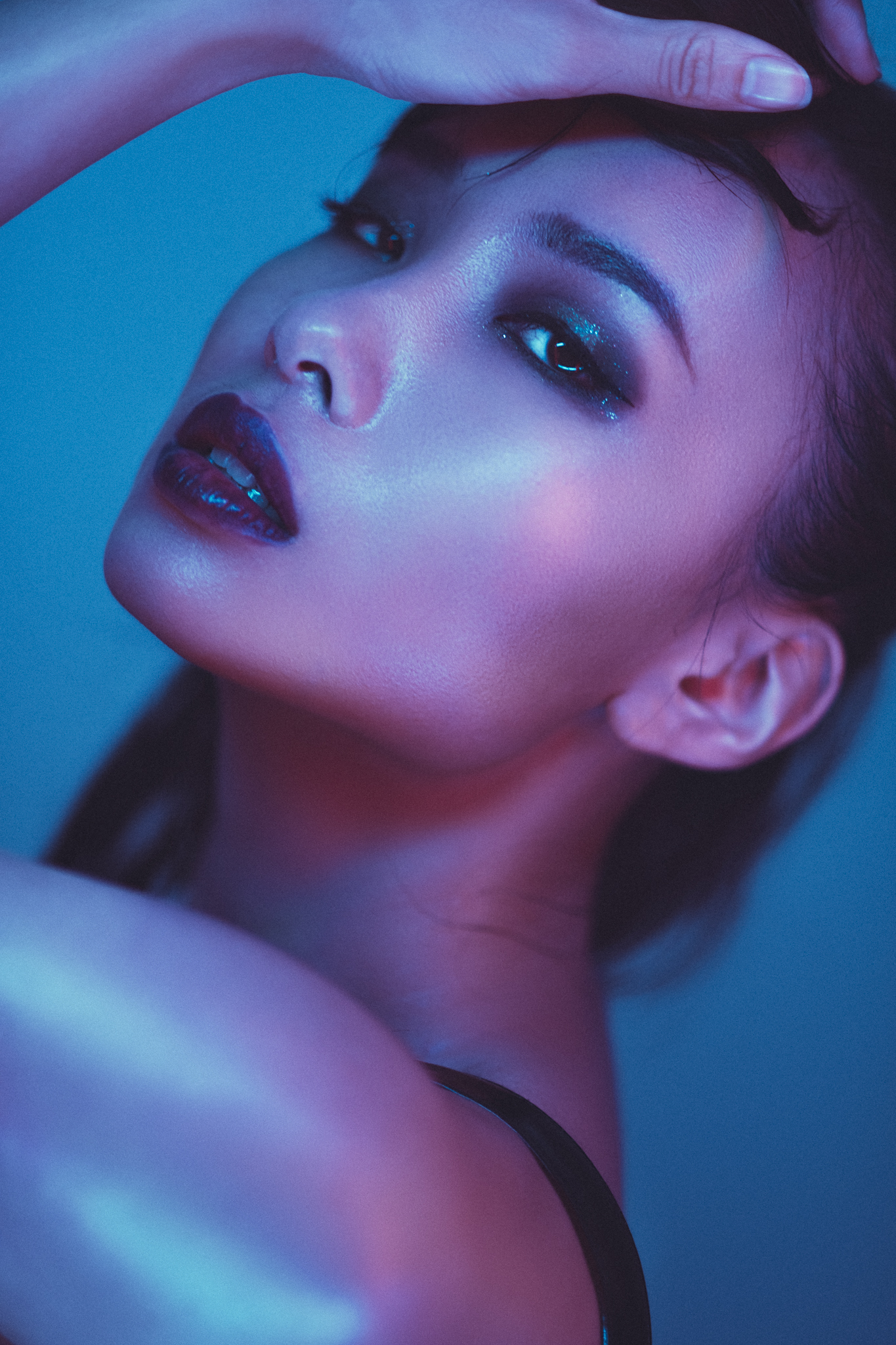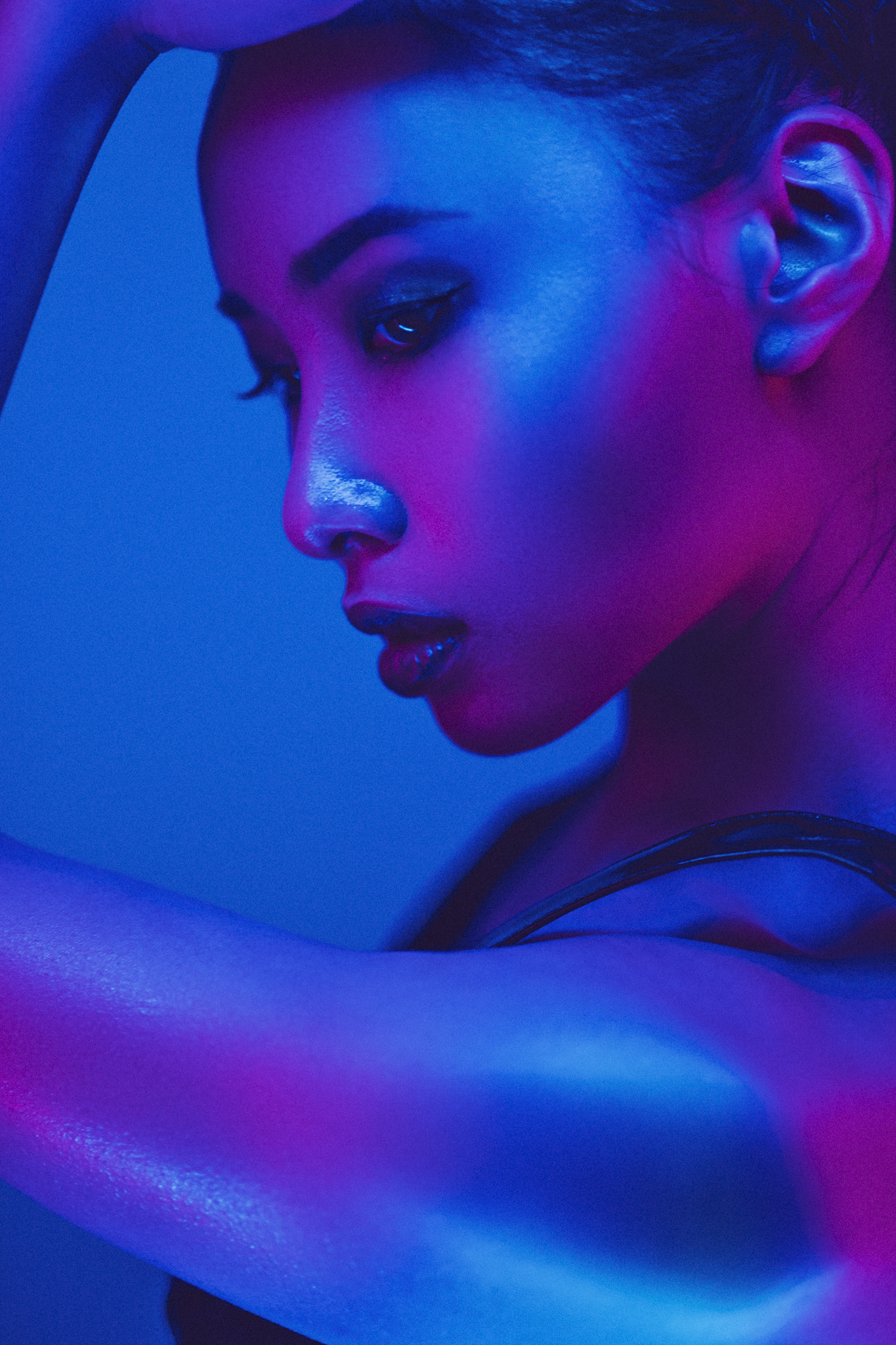For those of us that have dealt with colour in any way digitally in the last decade, we are unfortunately all too familiar with the dreaded colour banding issues. If you're not sure what colour banding is, then it's the visual 'stepping' of colour that happens in digital files. It happens a lot and it can happen for any number of reasons but the most common scapegoats for colour banning are usually poor colour depth in our cameras, aggressive compression algorithms with online sites and any number of other technical failings. Although all of these are often part of the problem, I see one other major culprit of severe colour banding and that's lighting.
Lighting with coloured gels is hard. Just let me be clear on that from the start, and to that end, it's far easier to get horrendous looking coloured light images than good ones. Nearly everybody at my lighting workshops say that they are there because they tried to shoot with coloured gels and couldn't get it work, so came to learn more. There are a lot of elements that need to be working together for gelled shots to look good and that often begins with the lighting modifiers we use.
Colour banding is often used as a term to describe harsh steps in colour. Image compression and colour depths aside, poor modifier choices will also create these ugly steps in colour.
As a general guide, light falls into two categories; hard light and soft light. Hard light produces stronger colours, is easier to control, but it often isn't very flattering. Soft light conversely produces weaker colours, harder to control light when using gels but does produce a more flattering looking light.
Most people start using gels through harder light modifier like grids and bare reflectors because the light is far easier to control. Unfortunately the down side of using these hard light modifiers is that I often see blown highlights in the gels. But blown highlights in the gels are not blown to white, they're blown to a single block of colour or their 'saturation limit'. I'll cover 'saturation limits' another day as that's a whole other issue and in this article I wanted to focus on how to avoid the issue more than explain them.
Colour banding is ugly in that it looks very unnatural. Colour never 'steps' like this in real life so when we see it in photos we aren't impressed.
What is Colour Banding?
If you've used gels with speedlights or hard light modifiers then I'm sure you'll have seen this clipping in the colours that we often refer to as colour banding. It is especially apparent when we see it on blank surfaces like backgrounds or even clothing. It's incredibly annoying and looks very ugly and unprofessional so we all try to avoid it as much as possible, but unfortunately that's a lot easier said then done. Like I mentioned earlier, older camera tech, online compression and a whole host of other things conspire to make colour banding happen, but we must ensure that we don't start the issue with poor modifier choices when we make the initial shot.
A lot of us are stuck with speedliits due to budget and I assure you a huge part of this colour banding problem is due to the lights you're using to begin with. Small lights are like hard lights and thus produce more contrast and saturation and that saturation is what's causing the aggressive banding. Speedlights are some of the hardest light sources around due to their small size but with that being said, strobes and their harder light modifiers like grids and open reflector dishes will also create this problem so let's look at how we can reduce it and it certain situations, even eliminate it entirely.
Hard and Soft Light Modifiers
Before we get any further, lets just take two seconds to clarify what I mean by hard and soft light modifiers. Hard light modifiers are generally smaller in relation to the subject, so for example grids, snoots and just open reflector dishes are usually referred to as hard light modifiers because they keep the spread of light quite direct and controlled. Conversely, soft light modifiers are the opposite and they are generally far larger in size in relation to the subject. Modifiers like softboxes, umbrellas and even beauty dishes produce this softer looking light.
Beyond their obvious larger size over hard light modifiers, soft light modifiers also do not allow any direct light to fall onto the subject. For example a softbox has diffusion built into them, umbrellas bounce the light around their surface prior to it falling on the subject and beauty dishes have that internal diffusion cone that also forces the light to be bounced around before it reaches the subject.
All of these characteristics result in the light not being as contrasty when it reaches its destination and that reduction in contrast also means a reduction in saturation.
Normally you'd be thinking 'fantastic, saturation is a plus', but that is not how we want to achieve great saturation in our lighting. The saturation level is achieved by shining a gel onto a shadow, the gels are made saturated when they leave the light, it is in fact poor light placement that ruins saturation not the modifier. But again, that's a topic for another day, here we want to wrangle the saturation to within a useable level so that we eliminate that horrendous colour banding. So to do this we would need the best of both worlds right? We would want the control and power that a hard light modifier gives us, but we would also want the soft and controlled saturation that a soft light modifier gives us. Is there such a thing?
The Solution to a Soft + Hard Light Modifier
Thankfully there is such a thing and it comes in the form of diffusion gels. Diffusion gels are essentially colourless and heat resistant thick sheets of tracing paper and they can be used anywhere that you'd use your normal gels. To show what they can do, let's look at a few examples of hard light modifiers at work with and without the diffusion gels in place.
Click to enlarge
-In the images above we can see the result of a standard open grid reflector being shone against a white wall with a pink gel. On its own it produces a very ugly colour banding grad regardless of whether it's close to the wall or further away from it. But by adding a diffusion gel, you immediately see how that ugly colour banding disappears at nearly all exposure ranges. Even when it's clearly very overexposed, it still does a great job of maintaining colour transitions.
Click to enlarge
-In this set of images we're looking at the light created by an umbrella reflector dish. These dishes are usually coated with a mirror-like silver interior to work in conjunction with the umbrellas. They are not really designed to ever be shone directly onto a surface and as a result they produce some of the ugliest colour banding around. But even with that mirror-like interior, the diffusion gel does an excellent job of diffusing the light to reduce even the worst colour banding.
Click to enlarge
-Here I wanted to show what we would normally use as reflector dish on a background. This is the far wider spread of a 65 degree dish or Maxilite as theyre often called. Even though this is what I use to light my backgrounds, they still produce a horrendous amount of colour banding regardless of whether they are close or far from it. The addition of a diffusion gel certainly helps to get it under control though and at low powers, this combination of wide dish and diffusion gel can produce some excellent and smooth background colours.
Click to enlarge
-I also wanted to include this last test as an example of how a 60x60cm softbox can eliminate colour banding nearly entirely. This softbox has two layers of diffusion, one internally and one externally. As a result, we get buttery smooth graduations in colour. So why not use this all the time? Well as a result of using a softbox to light the background, the entire room is now bathed in pink which makes for a real problem when it comes to lighting our subject.
Conclusions
So what can we take away from the above tests?
Diffusion gels would appear to reduce colour banding no matter what hard light modifier we use - Well first and foremost I think it's pretty clear to see just how powerful the diffusion gels are when used in connection with hard lights. No matter what hard light modifier we used, they always reduced colour banding and in a lot of cases eliminated it entirely.
Colour banding happens regardless of how close you are to the background - I often recommend people bring their modifiers away from the background to reduce colour banding and although this certainly helps a lot, it's not going to eliminate colour banding alone. Brining you modifier away from the backdrop and applying a diffusion gel on the other hand may well eliminate the problem entirely.
Reducing the power of the light will often reduce colour banding issues - We briefly spoke about saturation limits before and one of the route causes of this is, overexposing a gel. Often by reducing the power of the light through the gel will also reduce the colour banding issues.
Don't be afraid to double-up the diffusion - In the above tests I'm using a single diffusion gel but don't be afraid to double them up to get even more diffusion when needed. Often the doubling of gels does little to nothing, but doubling up the diffusion will certainly have an impact in this instance.
Lastly, I appreciate this is a test against a white wall and not a model, but trust me, the exact same principles apply whether it be a background or a model. Using a diffusion gel on your hard light modifiers will always reduce colour banding issues.
Where can I get me some Diffusion gels?!
Thankfully diffusion gels are fairly common but they do tend to be used by videographers a lot more than stills shooters. In the world of cinematography the diffusion gels are often simply referred to as 'frosts'. They have strong diffusion that they refer to as 'heavy frosts' and lighter diffusion that often refer to as 'light frosts'. Searching for any of those terms will yield a bunch of results.
But if you'd like to know which ones I personally use then it's pretty simple, I actually use the diffusion gels out of my very own gel packs. As a lot of you know, I sell my own gel packs, my 'Definitive' pack has all the saturated colours I use, the 'Pastels' pack has all of the softer colours I use and lastly my 'Utility' pack contains all of my colour correction gels, neutral density gels, as well as the diffusion gels.
My Utility pack contains two of the heavy frosts so that when they're doubled up they reduce practically all colour banding from any modifier. Plus they are made by LEE Filters which double coats them with heat resistant layers ensuring they last a very long time on hot lights and in my tests, these diffusion gels do not alter the colour of the light in any discernible way either. More information on these and my other gel packs can be found on my gels page here. Just scroll down to the bottom for the details on the 'Utility' pack which can be purchased directly here.
I understand that this whole article has now sounded like an advert for my gels, I even questioned whether I should include this section at all for fear of making the whole thing just sound like a sales pitch. You guys will have to make up your own minds on that but I will just say that the tests done here and their results should speak for themselves and are entirely genuine.
Whether you choose use my gels or not, I recommend you use some form of diffusion over your hard light modifiers just like I personally do to reduce or even eliminate that dreaded colour banding.
Bonus Tip: Gel Attachment
One last bonus tip as I know I'm going to be asked how I gelled my softbox in this test. Here's how I gel my modifiers with the 8"x10" gel sheets that come in my packs.
Thanks for Reading
Thanks as always guys for reading this article, I know they're often fairly long so I really do appreciate your precious time. If something doesn't make sense or if you have any questions then please don't hesitate to message me or comment below.
If you'd like to be updated once a month with all of my other articles then feel free to sign up to my newsletter here. Signing up now also gets you a free 10 page studio lighting PDF.
See you all in the next one :)
:WARNING: Yet more flagrant use of HARD sales below!
If you liked this article and would be interested in more posts like this in the future, please feel free to sign up to my monthly newsletter. I publish one of these articles every week and each month I collect them all up and send them directly to your inbox just in case you missed one. Signing up now also get's you my free 10 page pdf on Studio Lighting Tips and Techniques. Jake Hicks Photography - Newsletter
If you're interested in any of my work and would like to know more about how I created some of my shots then why not check out my workshops. Here you can find out everything there is to know about Gelled Lighting, Long Exposure Flash Photography and my entire Post-Pro Workflow. Jake Hicks Photography - Workshops
I've also just released a brand new 22 hour complete Gelled Lighting Tutorial video. I go over everything from studio lighting setups with gels to being on location with gels plus I also go through my complete retouching and post pro workflow. For more details and complete breakdown of everything that's include check out my Coloured Gel Portraits Tutorial
I also offer comprehensive coloured gel packs. These collections of gels are what I use day to day to create some of the most highly saturated colours around. If you're looking at getting into gelled lighting or need to get stronger and richer colours in your coloured gel work why not check out my Jake Hicks Photography Gel Packs




















